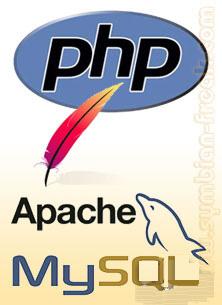7 recommended articles about connection and disconnection
In order to connect to the server, when calling mysql, you usually need to provide a MySQL username and most likely a password. If the server is running on a machine other than the login server, you also need to specify the hostname. Contact your administrator to find out the parameters used to connect (i.e., the host to connect to, the username, and the password used). After knowing the correct parameters, you can connect as follows: shell> mysql -h host -u user -p Enter password: ********host and user respectively represent the host name where the MySQL server is running and the MySQL account user name. . Replaced with the correct value when set. ******** represents your password; enter it when mysql displays the Enter password: prompt. If it works, you should see some introductory information after the mysql> prompt: shell> mysql
1. MySQL Getting Started Tutorial 1 - Connecting and Disconnecting the Server

Introduction: In order to connect to the server, when calling mysql, you usually need to provide a MySQL username and most likely a password. If the server is running on a machine other than the login server, you also need to specify the hostname. Contact the administrator to find...
2. mysql connection and disconnection server

Introduction: In order to connect to the server, when calling mysql, you usually need to provide a MySQL username and most likely a password. If the server is running on a machine other than the login server, you also need to specify the hostname. Contact your administrator to find out the parameters used to connect (that is, the host to connect to, the username, and the password used). Know
3. A summary of a thousand lines of MySQL learning notes
Introduction: This article summarizes in detail the learning process of MySQL Various techniques are shared with everyone for your reference. The details are as follows: /* Start MySQL */net start mysql/* Connect and disconnect from the server */mysql -h address-P port-u username-p password/* Skip permission verification to log in to MySQL */mysqld --skip- grant-tables--Modify root password password encryption
4. MySQL Chinese Reference Manual--Connecting and Disconnecting Servers_MySQL
Introduction: This chapter provides an introductory tutorial to MySQL by demonstrating how to use the mysql client program to create and use a simple database. mysql (sometimes called the "terminal monitor" or just "monitor") is an interactive program that allows you to connect to a MySQL server, run queries, and view the results. mysql can be used in batch mode: you put the query in a file in advance, and then
5. MySQL Chinese Reference Manual--Connecting and Disconnecting Servers_MySQL
Introduction: MySQL Chinese Reference Manual--Connecting and Disconnecting Servers
6. One of the most commonly used MySQL Qianxing_MySQL
Introduction: * Start MySQL * net start mysql * Connect and disconnect from the server * mysql -h address -P port -u username -p password * Skip permission verification to log in to MySQL * mysqld --skip-grant-tables-- Modify root password password encryption function
7. mysql Use the command line to connect and disconnect from the server
Introduction: This article introduces how to connect and disconnect from the database using the command line. In order to connect to the server, when calling mysql, you usually need to provide a MySQL username and most likely a password.
The above is the detailed content of 7 recommended articles about connection and disconnection. For more information, please follow other related articles on the PHP Chinese website!

Hot AI Tools

Undresser.AI Undress
AI-powered app for creating realistic nude photos

AI Clothes Remover
Online AI tool for removing clothes from photos.

Undress AI Tool
Undress images for free

Clothoff.io
AI clothes remover

AI Hentai Generator
Generate AI Hentai for free.

Hot Article

Hot Tools

Notepad++7.3.1
Easy-to-use and free code editor

SublimeText3 Chinese version
Chinese version, very easy to use

Zend Studio 13.0.1
Powerful PHP integrated development environment

Dreamweaver CS6
Visual web development tools

SublimeText3 Mac version
God-level code editing software (SublimeText3)

Hot Topics
 1371
1371
 52
52
 How do you alter a table in MySQL using the ALTER TABLE statement?
Mar 19, 2025 pm 03:51 PM
How do you alter a table in MySQL using the ALTER TABLE statement?
Mar 19, 2025 pm 03:51 PM
The article discusses using MySQL's ALTER TABLE statement to modify tables, including adding/dropping columns, renaming tables/columns, and changing column data types.
 How do I configure SSL/TLS encryption for MySQL connections?
Mar 18, 2025 pm 12:01 PM
How do I configure SSL/TLS encryption for MySQL connections?
Mar 18, 2025 pm 12:01 PM
Article discusses configuring SSL/TLS encryption for MySQL, including certificate generation and verification. Main issue is using self-signed certificates' security implications.[Character count: 159]
 How do you handle large datasets in MySQL?
Mar 21, 2025 pm 12:15 PM
How do you handle large datasets in MySQL?
Mar 21, 2025 pm 12:15 PM
Article discusses strategies for handling large datasets in MySQL, including partitioning, sharding, indexing, and query optimization.
 What are some popular MySQL GUI tools (e.g., MySQL Workbench, phpMyAdmin)?
Mar 21, 2025 pm 06:28 PM
What are some popular MySQL GUI tools (e.g., MySQL Workbench, phpMyAdmin)?
Mar 21, 2025 pm 06:28 PM
Article discusses popular MySQL GUI tools like MySQL Workbench and phpMyAdmin, comparing their features and suitability for beginners and advanced users.[159 characters]
 How do you drop a table in MySQL using the DROP TABLE statement?
Mar 19, 2025 pm 03:52 PM
How do you drop a table in MySQL using the DROP TABLE statement?
Mar 19, 2025 pm 03:52 PM
The article discusses dropping tables in MySQL using the DROP TABLE statement, emphasizing precautions and risks. It highlights that the action is irreversible without backups, detailing recovery methods and potential production environment hazards.
 How do you represent relationships using foreign keys?
Mar 19, 2025 pm 03:48 PM
How do you represent relationships using foreign keys?
Mar 19, 2025 pm 03:48 PM
Article discusses using foreign keys to represent relationships in databases, focusing on best practices, data integrity, and common pitfalls to avoid.
 How do you create indexes on JSON columns?
Mar 21, 2025 pm 12:13 PM
How do you create indexes on JSON columns?
Mar 21, 2025 pm 12:13 PM
The article discusses creating indexes on JSON columns in various databases like PostgreSQL, MySQL, and MongoDB to enhance query performance. It explains the syntax and benefits of indexing specific JSON paths, and lists supported database systems.
 How do I secure MySQL against common vulnerabilities (SQL injection, brute-force attacks)?
Mar 18, 2025 pm 12:00 PM
How do I secure MySQL against common vulnerabilities (SQL injection, brute-force attacks)?
Mar 18, 2025 pm 12:00 PM
Article discusses securing MySQL against SQL injection and brute-force attacks using prepared statements, input validation, and strong password policies.(159 characters)




